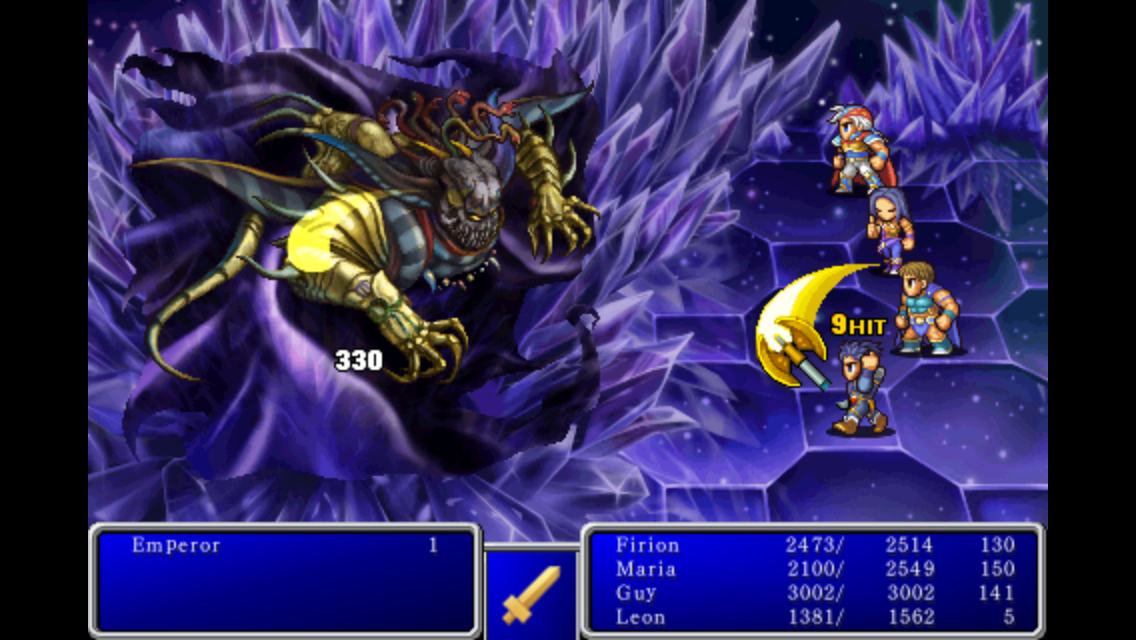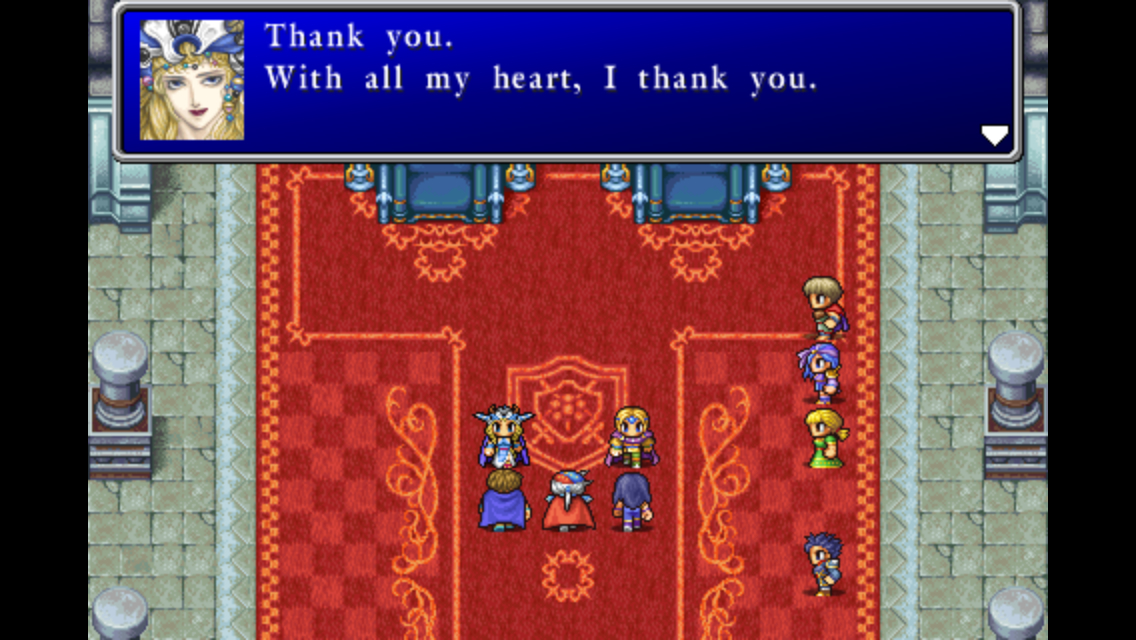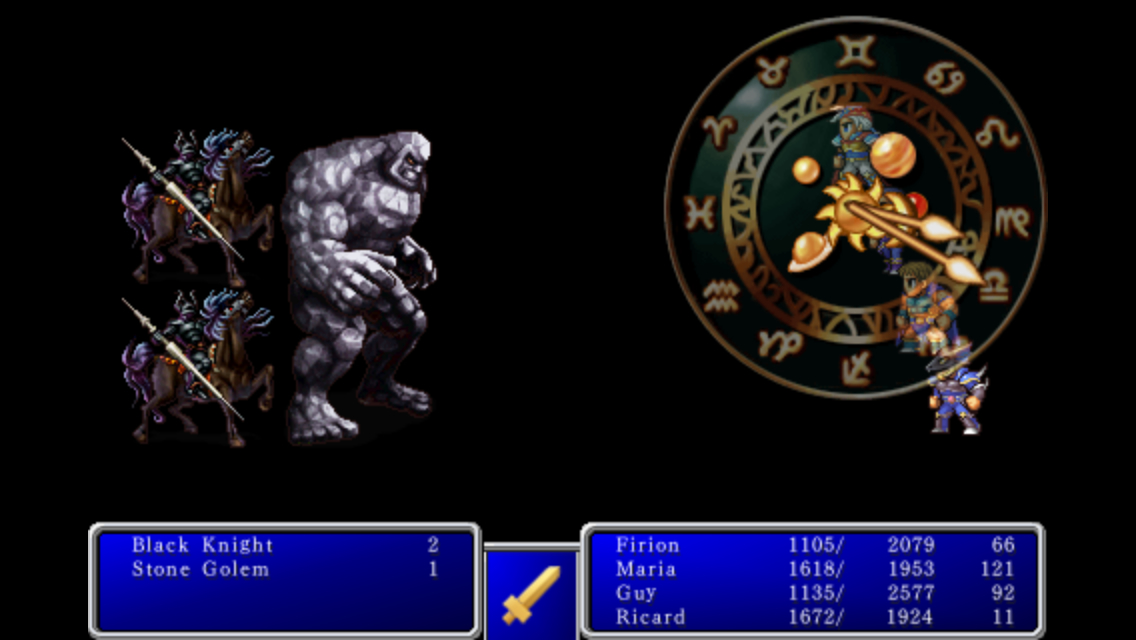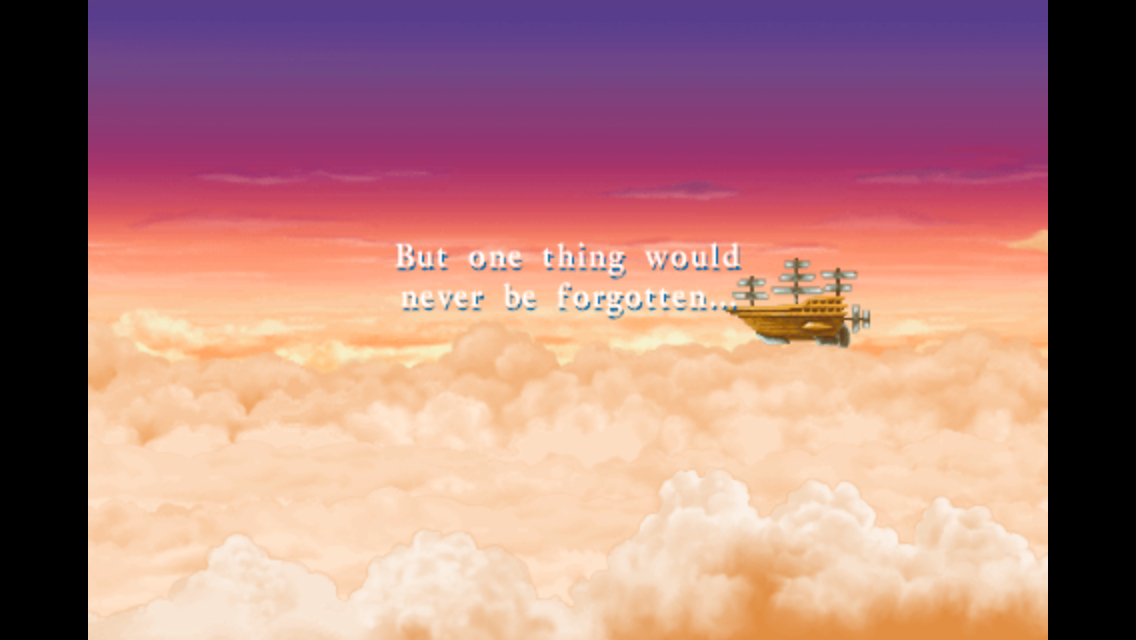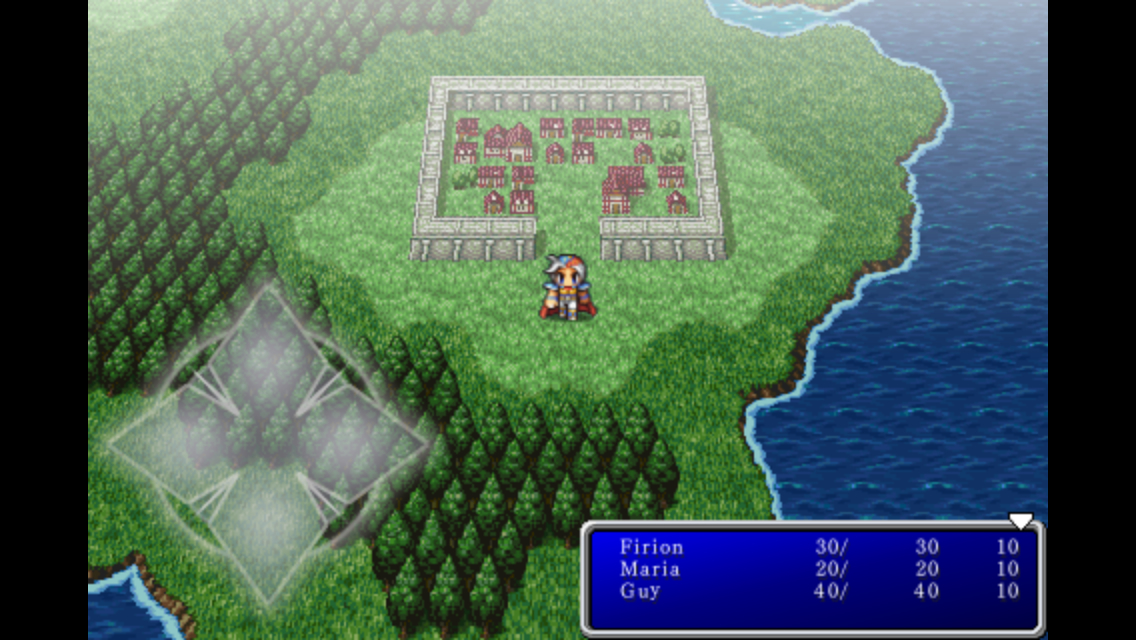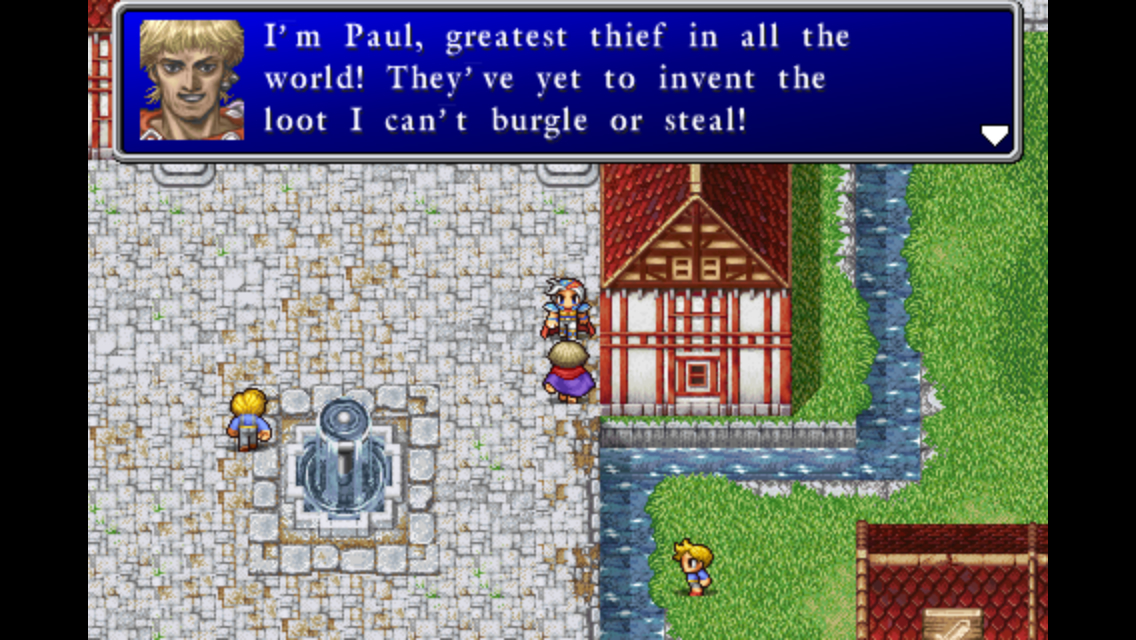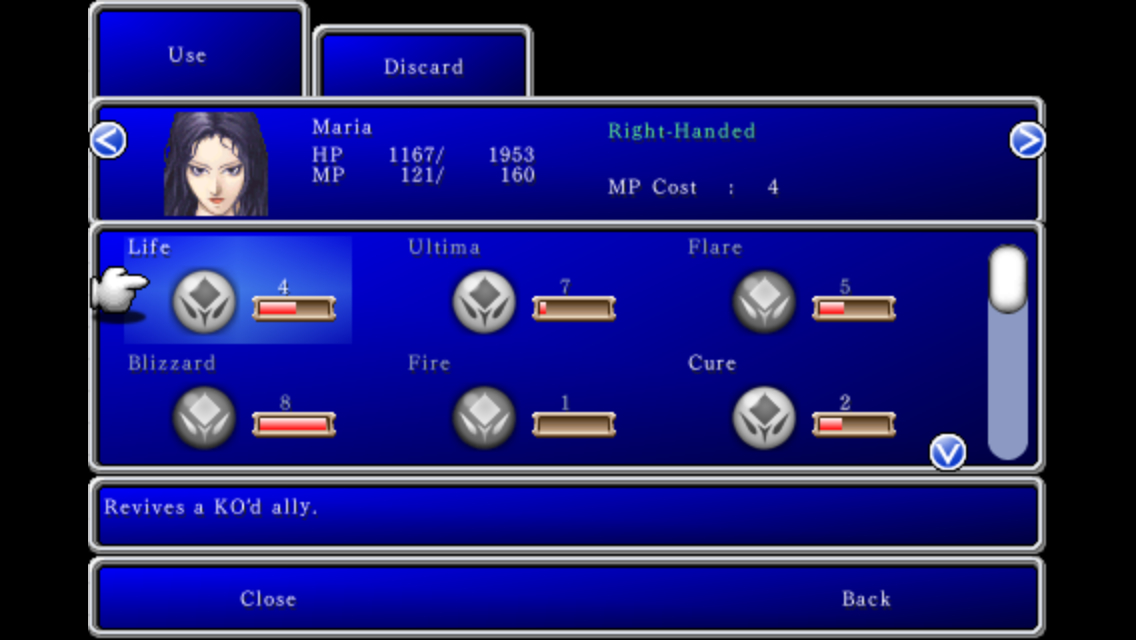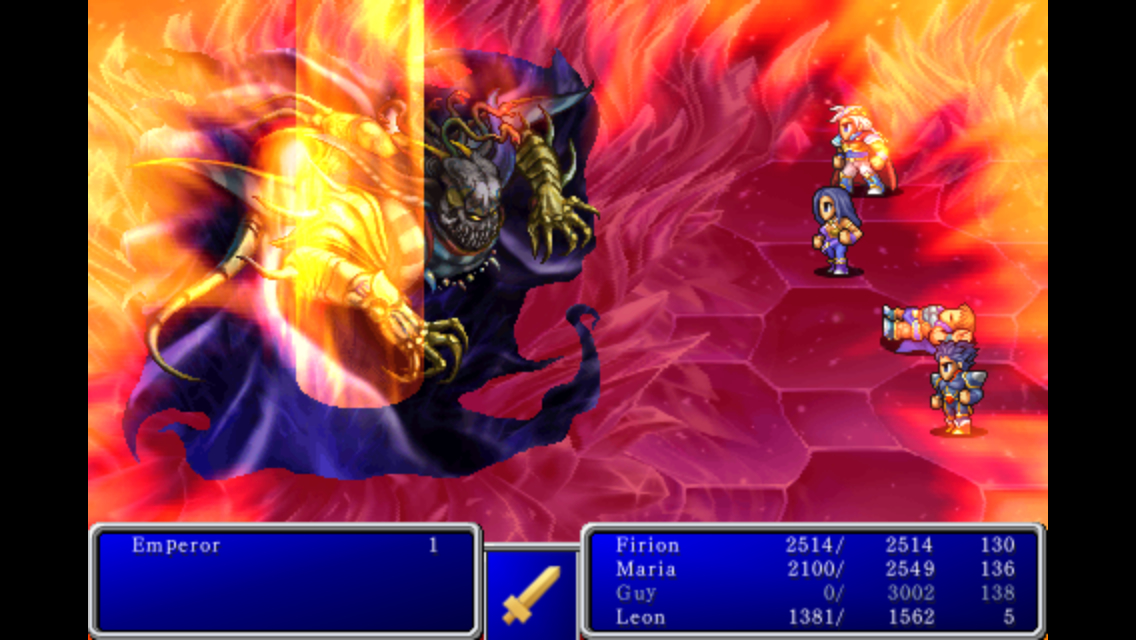 Hello, gentle readers, and welcome to the RPG Reload, the weekly feature where we pummel each other to get stronger. Each week, we take a look back at an RPG from the App Store’s past. It’s a little bit of reflecting, a little bit of revisiting, and sometimes just an excuse to take a deep dive in a way that doesn’t suit a regular review. The RPG genre is a pretty wide one, and all kinds are welcome here. I try to keep a good balance of different ones from week to week, but I need your help now and then. Once per month, I’ll be playing an RPG selected by one of you. All you need to do is vote for the RPG you’d like to see by commenting below, posting in the Official RPG Reload Club thread, or by tweeting me at @RPGReload. When the time comes, a roll of the dice will determine the winning game, and much fun will be had by all.
Hello, gentle readers, and welcome to the RPG Reload, the weekly feature where we pummel each other to get stronger. Each week, we take a look back at an RPG from the App Store’s past. It’s a little bit of reflecting, a little bit of revisiting, and sometimes just an excuse to take a deep dive in a way that doesn’t suit a regular review. The RPG genre is a pretty wide one, and all kinds are welcome here. I try to keep a good balance of different ones from week to week, but I need your help now and then. Once per month, I’ll be playing an RPG selected by one of you. All you need to do is vote for the RPG you’d like to see by commenting below, posting in the Official RPG Reload Club thread, or by tweeting me at @RPGReload. When the time comes, a roll of the dice will determine the winning game, and much fun will be had by all.
This week, I’m covering something of a dark horse. Imagine being a relatively small company and bringing out a new IP against an established genre juggernaut and, unbelievably, scoring a pretty decent hit. How do you follow that up? Conventional wisdom says that you play it safe, addressing criticisms of the original, expanding on content, and most of all, not straying too far from what brought you success in the first place. At least, that’s modern conventional wisdom, but back in the day, video game sequels had a tendency to go absolutely bananas. Even back then, however, the RPG big dog series, Dragon Quest, played things very conservatively. The original Final Fantasy ($7.99) was itself a very safe spin on Dungeons & Dragons and Dragon Quest ($2.99). The follow-up, on the other hand, would not take that route, and in its own way, it ended up creating one of the core tenets of the series. Oh yes, my friends, it’s Final Fantasy 2 ($7.99) time.
I often joke around that Final Fantasy fans enjoy ranking the mainline games even more than they like playing them. Everyone has their favorites, and the immense variety within the series means you can make a pretty good case for most of them, making for fun, lively, and sometimes exhausting conversations between fans. There’s a lot of disagreement as to which ones belong at the top of the pile, but as a minor miracle, there is something almost every Final Fantasy fan agrees on: Final Fantasy 2 is near or at the bottom of the series. It’s especially impressive that it has maintained that reputation even when introduced to English gamers in a considerably improved form. I’m not going to stand here and tell you that it’s tragically misunderstood and secretly the best Final Fantasy game, because it’s not. It’s deeply flawed, both conceptually and practically, and for anyone coming into it familiar with the rest of the series, it’s incredibly odd and opaque. That being said, Final Fantasy 2 is not the embarrassing misstep that should be swept from the history of the series, as some people treat it. In actuality, it’s perhaps one of the most important pieces of Final Fantasy‘s very foundation, and it deserves, if not love, then at least a little respect.
Square had bet hard on the original Final Fantasy, a gutsy move that luckily paid off. Part of that bet was starting work on the sequel before anyone even knew how well the first one would sell. The staff for Final Fantasy 2 was virtually identical to that of the original game, though their specific roles shifted a bit. The biggest shifts were Hironobu Sakaguchi stepping away from design to focus on his director role, and Akitoshi Kawazu taking on the task of lead design. I’m assuming this was due to the general praise for Kawazu’s vital contributions to the first game’s battle system, but it could have been for any number of reasons. Why he was put in the lead was far less important than what came as a result of giving him carte blanche, in the long run, and Final Fantasy 2 would be the last time Kawazu was to touch the main series until being called in for an emergency landing on Final Fantasy 12 nearly 20 years later. The game ended up releasing in late 1988 in Japan, the meat of a terrifying Dragon Quest 3 ($9.99)/Dragon Quest 4 ($14.99) sandwich.
By almost any account, most of the eccentricities of Final Fantasy 2 can be credited to Akitoshi Kawazu, and looking at the many games he handled afterwards, I see no reason to dispute that. Outside of Final Fantasy 2, he’s most famous as the creator of the SaGa series, which most English gamers likely know best under the original English title of Final Fantasy Legend. He also created the Final Fantasy Crystal Chronicles series, and has served as a producer on many other Square titles. Notably, he’s one of the few members of the original Final Fantasy team still working at Square today. RPG fans have many differing views of the man, running the gamut from mad genius to despicable fiend, due to his games almost universally operating on some very unconventional rules.
Final Fantasy 2 is the original example of Kawazu’s style. It chucked out almost everything from the original Final Fantasy. While Dragon Quest had just closed a trilogy that took place in the same world with impressive amounts of continuity, Final Fantasy 2 started a new world from scratch. While the fundamentals of the combat system carried over in as much as you still had your guys on the right hacking away at monsters on the left in turn-based battles, almost every other mechanic was turned on its head. The class system, perhaps the heart of Final Fantasy 1, was tossed out completely. In its place, characters would simply become better at what you had them do. Anyone could use any weapon or any magic if you equipped them with it, but how well they could use it was strongly connected to how often they practiced it. Someone who hit a lot of enemies with a sword would become increasingly strong at doing that, while someone who called down thunderbolts on the bad guys would see their magic become more and more powerful.
With a system like this, it hardly seems important to have levels in the classical sense, so out they go. If there are no levels, there’s certainly no need for experience points, so good-bye to those, as well. Spell levels certainly don’t seem to make much sense if magic becomes stronger and stronger, so let’s eliminate those and the level-charges with them in favor of magic points. Your characters will become exactly what you make of them, nothing more and nothing less. If you think about it, it’s really the highest form of personal customization possible. Of course, we all know the outcome now, but it’s not hard to see how this may have looked good on paper.
It does present one interesting problem, though. If these characters are basically blank slates with no jobs to distinguish them, how will we distinguish them at all? Fortunately, depending on how you see RPGs, the Final Fantasy team had either put the cart before the horse on this one, or the other way around. The first game’s story was an afterthought, a bit of well-applied glue to a bunch of loose settings and scenarios. The gameplay design came first, the explanations after. Final Fantasy 2 took the opposite approach. This time, a carefully plotted story was written first, with the gameplay then being constructed around that narrative. In turn, the party consisted of named, defined characters with their own feelings and motivations outside of the player’s. In hindsight, this is one of the the things that defines Final Fantasy as a series, and most of the games in the series to follow would use this approach.
The story isn’t exactly amazing or innovative, but for an 8-bit era RPG, it was pretty coherent and complex. It tells the story of a group of kids, orphaned by an evil empire, who join up with a rebellion and help them take down the wicked emperor. It’s clearly influenced by Star Wars, and it certainly wouldn’t be the last time the series drew from Lucas’s sci-fi hit. One of the interesting things it does is have your regular party consist of just three characters, with the fourth spot reserved for temporary members. These fourth members were often more fully developed than your regular party members, and their goals almost always differed from your main group’s in some way. Having this rotating spot allowed the series to use for the first time another one of its more famous tropes. Though it wasn’t the fate of every temporary character to leave your party, a few of them would go out in a blaze of noble sacrifice. It’s not quite as ridiculously overused here as it would be in Final Fantasy 4 ($14.99), nor is it as significant as in Final Fantasy 7. It is, however, incredibly uncommon in games of this vintage and certainly noteworthy.
There are lots of other things introduced in this game that would stay with the series for a long time to come, including Cid, chocobos, having back rows in battle, dual-wielding weapons, dragoons, and so on. These contributions are often forgotten by English gamers, likely because we weren’t officially introduced to this game until 2003’s Final Fantasy Origins on the PlayStation. By then, just about everything positive the game had introduced was taken for granted by series fans, leaving only the negative or strange elements to stand out. Interestingly, we might have gotten it sooner, had original plans panned out. An English version of the original 8-bit version was being worked on by the translator who eventually did Final Fantasy 4, and the project even got far enough to be advertised in trade magazines before being dropped due to the impending arrival of Nintendo’s 16-bit Super NES. This of course led to Final Fantasy 4 being renamed Final Fantasy 2 for the west, creating a rolling snowball of confusion for years to come.
Final Fantasy 2 would make up for its late introduction to non-Japanese by being re-released three more times in the next ten years, including the Game Boy Advance Dawn Of Souls remake, the PSP enhanced version of that remake, and the mobile port of that PSP version. The game was also re-released a few times in Japan on top of those versions. The GBA version brought the most significant changes to the game, with redrawn graphics from the Japan-only Wonderswan remake and a significant new chapter added to the game in the form of Soul Of Rebirth, a post-game story that covers some of the deceased characters’ journey through the afterlife. I hope you didn’t remove their equipment before their heroic sacrifices, or you’re going to have a bad time here! Importantly, the GBA version also made it so that your characters would gain an HP increase after a set number of battles, regardless of any of their actions. The PSP version redrew the art again, added three new dungeons, the Arcane Labyrinths, and the ability to defend. The iOS version, released in 2011, is essentially the same as the PSP version, with a new UI and touch controls implemented.
At this point, you’re probably thinking the game sounds pretty decent. Why are all those mean Final Fantasy fans ragging on it, anyway? Well, sometimes things that seem good in theory don’t work very well in practice, and that essentially describes Final Fantasy 2. The basic problems started from the original version of the game being pretty difficult. Your characters’ HP would only increase if they took a lot of damage and were left standing at the end of the fight, and MP would only increase if you used a lot of it during a battle. Frontline battlers became powerful enough, generally speaking, but mages were often hopelessly underpowered and unable to survive in the long run. Many bosses had physical resistance, however, meaning you had to have some developed magic-users ready to go with plenty of MP in hand. You couldn’t play the game straight and hope to make it through without a lot of aggravation.
So, as it often does in RPGs, the conversation turned to grinding, but Final Fantasy 2‘s growth system didn’t support traditional grinding very well. You couldn’t venture far from a town because developing your magic required you to constantly refill your MP, but sticking close to towns typically resulted in encounters with weak enemies who would do nothing for increasing your HP. Clearly, creative solutions were required, and they came in the form of a bug and an unintended use of a design element. The bug allowed you to enter a command right to the point of confirming it, cancel out, and still receive experience credit for it. This was a great way to build up spell and weapon proficiency.
As for the unintended design consequence? Final Fantasy 2 added a number of status ailments, and one of them was the sleep status. The designers wanted you to be able to wake up your own party members by giving them a knock to the noggin, so they allowed you to target your own characters with attacks. You probably see where this is going. Players soon figured out that they could engage in battle with a weak enemy, target and cancel hundreds of times to level up weapons and magic, and proceed to beat the ever-loving stuffing out of their own party members to increase their HP. In fact, this was the most sensible way to play Final Fantasy 2 up until the Game Boy Advance version. By doing this, you could develop your main party members to insane levels of power right outside the first town if you were persistent, and there’s no one more persistent than an RPG player, in my experience. After doing this, you could take a little trip to a late town early, gear up with some of the best equipment, and steamroll the rest of the game.
The changes made to the nuts and bolts of the GBA version resulted in a far fairer game. The command cancel bug is gone, and while you can still beat up your own party members, it’s hardly necessary thanks to the regular HP increases the game now gives you. With these pressing problems out of the way, other issues are more obvious. The first is how the game chooses to gate you on the world map. Sometimes it uses an obstacle you can’t pass, like most RPGs do, but in a great many cases, the enemies just suddenly get ridiculously difficult without any warning. Lots of RPGs do a similar thing, but usually it’s signified by crossing a bridge or something like that. Final Fantasy 2 will just straight-up throw fodder enemies on one tile, and then on the next similar-looking tile, it uses a monster table that will absolutely wreck your party.
You’ll also find that the magic system is still more or less broken. MP gains are hard to come by in the early stages, since you have to consume a lot of MP within one battle and every spell starts off costing a single MP to cast. As spells level up, they take more and more MP to use, and they’ll level up just as well out of battle as they will in. You’ll reach a point where your cure magic is far more potent than it needs to be, and if you’re only using it to patch up between battles, your MP will never keep pace. This leveling system is also a problem for spells you only use sporadically, like Raise magic. Until it’s at a high enough level, there’s a strong chance it will miss when you use it in a fight, and that’s not the kind of spell you want to miss with when you need it. There’s no real way to grind it up short of murdering your own characters over and over again, and you have to do that for every character you want to use it with.
Offensive magic suffers from a similar issue. The damage a spell deals scales with its level, so lower level versions of spells will do piddling amounts of damage to enemies. Trying to juggle spells so that all of the elemental weaknesses are covered is tough without grinding, but as I mentioned before, some enemies will simply resist anything but the proper magic type, so you really need to have your bases covered. There’s a big story quest late in the game where you recover a sealed, forbidden magic to help defeat the emperor. The problem is that like all magic, this one starts at level 1, and it takes a serious amount of effort to get it up to any useful level by the time you reach the final boss. Unfortunately, the final boss has very few reasonable weaknesses, and that spell is one of them, so you should probably get on that as soon as you get it.
Wait, I haven’t told you about the dungeon designs yet. The dungeons in this game are fairly long and full of neat little passages and side paths. They’re also full of doors that lead to nothing but empty rooms where you’re almost guaranteed to have a couple of random encounters before you can get out of the room. It’s the game’s favorite trick, by far. You’ll come across rows of doors in almost every dungeon where one leads you to the place you want to go and the other three lead to irritating battles. It’s a terrible situation, because apart from that poor decision, many of the dungeons in the game are quite interesting. There’s even some good, and in some cases essential, loot hidden in them, but to find it, you have to kick down every door and suffer every stupid battle.
Finally, there’s that rotating fourth chair. In concept, it’s great, since it serves a useful dramatic purpose and potentially changes the dynamic of your party. In the actual game, almost every character that joins you is pathetically underpowered and ineffective. You can spend time to raise them up, but since all of them will take leave of you sooner or later, it’s kind of pointless to do so. Your final optional party member joins at nearly the last minute, and he’s basically useless for the rest of the game unless you make a concerted effort to make him otherwise. Square would learn their lesson by Final Fantasy 4, making sure that new party members join with their level set in relation to Cecil’s, but here, it’s still a half-formed idea, so your fourth member all too often ends up being dead weight.
This is Final Fantasy 2. It’s a game of ideas, and a great many of the good ones went on to shape the series, while the bad ones were discarded or hammered into something better in Kawazu’s SaGa games. It’s the least-popular game in the main series, and the lowest-selling, too, but in many ways, it set the pace for Final Fantasy as a series. Nothing and no one is safe. Traditions can and will be tossed at any moment in favor of interesting ideas and systems. The narrative is often more important than anything else, but not so important that it should carry into the next game. Final Fantasy is about nothing, everything, and an occasionally surly guy named Cid who’s good with technology. Is there any better summary of the series than this game and what it represents, I wonder?
Final Fantasy 2‘s iOS version was released around the same time as the first Final Fantasy, and it’s seen similar support from Square Enix, which is to say, very little. There have been bug fixes when they were absolutely critical, and language updates. There’s no support for retina displays, larger screens, controllers, iCloud, or even multitasking. The game does quicksave if you need to close it out for any reason, but you still have to go through the title screen to get back to your game, which is pretty inconvenient these days. The game also suffers from occasional sound glitches, especially in iOS 8, but you can fix them by pulling down your notifications window or any other sort of function that interrupts the game without closing it. I sincerely hope Square Enix gets around to updating it someday, even though it’s likely fairly low priority.
I’ll always have a special place in my heart for this little broken game simply out of recognition for its ambition to break the mold in fundamental ways. I play through it almost every year or so, and while the irritating parts never get any better, I still have a good time with it on the whole. That’s just what I think, though. What do you think of Final Fantasy 2? Love it, hate it, or anything in between, I want to hear what you have to say. Please leave your comments below, stop in at the Official RPG Reload Club thread, or tweet me at @RPGReload. While you’re at it, don’t forget to vote for the next reader’s choice Reload, which will be RPG Reload File 021 in the second week of January. As for me, I’ll be back next week with the final regular Reload of 2014 before we cut to our specials to close out the year. As always, thanks for reading!
Next Week’s Reload Hint: Who is this Kid?
